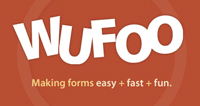 While we had Kevin Hale (@wufoo) in town for our ConvergeSE conference I was able to talk with him about some behind the scenes on their legendary product support and how it’s actually central to their business’ success, then we talk a little about the future of HTML5 for their forms.
While we had Kevin Hale (@wufoo) in town for our ConvergeSE conference I was able to talk with him about some behind the scenes on their legendary product support and how it’s actually central to their business’ success, then we talk a little about the future of HTML5 for their forms.
Gene Crawford: All right. So we’re here with Kevin Hale of Wufoo. Thank you so much for taking time out of your day to do the podcast with us.
Kevin Hale: I am happy to be here.
Gene: Well, I just wanted to jump right in with you. You’re here at ConvergeSE and you’re talking about support driven development. And I really want to know how that’s changed your business or did you start your business thinking about that?
Kevin: Well, one of the interesting things about it is, even though I mostly talk about it now, I was one of the last people to get on the train when we were first setting up the company. So the first year doing the company was just the three founders, it was Chris, Ryan and myself. And Chris was the really, you know he focused a lot on sort of business aspects of stuff and he was really big about customer support at that time. So he was answering every single email that came in when we were doing, building out the product and building out the beta testing. And basically, at some point he was like, “This is not fair,” but he was really good about answering it as soon as people sent and people were like really amazed and were like, “Oh, that’s really exciting,” and stuff, and generating the momentum and stuff. So this has to be split up and shared.
And even then it wasn’t really a big hit, like…
Gene: Yeah no one loves to do support, right? It’s the last thing you want to do.
Kevin: I feel like I’ve changed a lot as a designer and so one of the first things, like at that point I was just, “Ah”, I had a very strong personality as a lot of designers tend to, as just creative types and so my feeling was, things I made are like gifts from God, write it down…
Gene: Right.
Kevin: …and if you get it wrong it is your fault.
Gene: It’s your fault for not understanding it, right.
Kevin: Exactly. And it took a long time, after being forced to have to do my support, just because out of fairness, I started to see like, I’m making mistakes that I could change or there’s things that I’m making assumptions about that I didn’t realize. And it humbled me greatly. And it, after it was just the three of us for the first probably two and a half years of doing the service and at that point you get this feeling, especially you know when we were dividing up the times where you do your eight or twelve hour shifts of support where you get a good feeling of the pulse of the software, how well it’s working off your customer base and you’re completely aligned with them trying to do what you can with them.
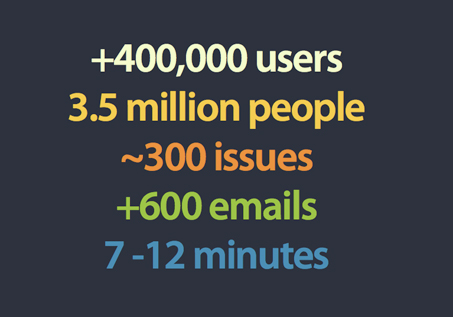
Kevin: And it changed the way I design. It changed my perspective, like how I think about things and I don’t always assume I know the answer. And I think that was a huge benefit and boon to us. So yeah, it started off with… Chris a business sort of person which you wouldn’t really sort of, and he also does programming, he built like the login system and he programs even now, he built all the payment integration. But his big thing has always been like, “You do the right thing by the people that are sort of paying your paychecks,” right, and it’s just common courtesy to do and its good business.
Gene: Absolutely.
Kevin: And he, put that inside of me and I’ve sort of taken it, I’m like, “All right, I believe in this wholeheartedly,” so…
Gene: It’s amazing.
Kevin: Yeah, and the thing is it’s really important that you do it from the get go you know when you’re first starting up that company because it’s hard to put that in later on.
Gene: Right.
Kevin: Like once you have engineering teams who are not used to doing customer service…
Gene: You’re never going to do it.
Kevin: …right, and you have marketing and sales people, like even our accounting person.
Gene: Right.
Kevin: …like that’s not something she would have done.
Gene: Wow, so it’s just…
Kevin: Every single person. [overlapping talks]
Gene: …every person in your organization. That’s incredible.
Kevin: Every single person.
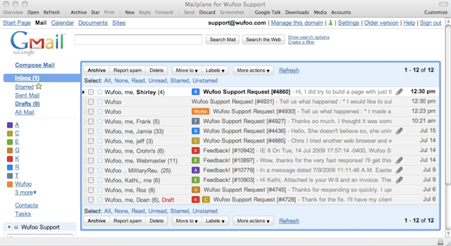
Gene: Well along those lines, I’ve seen your talk and I’ve seen you show the Gmail interface and you’re using like the labeling system and stuff which I think is genius. But, outside of that, how do you manage all the different streams of stuff that happens like Twitter, Facebook and…?
Kevin: OK, so the primary way we answer support is through email.
Gene: Right.
Kevin: So there’s the Wufoo contact forms on there and then there’s the support@Wufoo.com. So we were very late into the Twitter arena, actually and part of it was having to do with there was a domain squatter in Spain who had squatted our name.
Gene: Right.
Kevin: And they’re like, “You have to pay us money,” and so eventually we contacted Twitter and went through the whole rigmarole of handling that. So it took us awhile to get on that. We now have dedicated support people so people who take the major parts of their shift during the weekdays.
Kevin: So Monday through Friday from eight AM to eight PM. There’s two people that handle the majority of the support and then developers take on from eight PM to midnight and the weekends. And so usually, and it’s kind of split up what, Twitter stuff so there’s two support people Jenna and Andrew, they’ll answer anything that’s support related for Twitter and then other, general posting and interesting stuff that’s other people. But everyone has access to the Twitter account.
Gene: Right, that’s cool, right.
Kevin: And everyone has permission to Tweet to it if they need to so I mean we basically trust the whole team to handle it. Support though comes from everywhere. So people will try to call.
Gene: Yeah.
Kevin: People will try to email to different accounts and stuff. So we try to follow everyone appropriately to do that stuff, I don’t know, I think as it gets bigger and bigger we’ll have to figure out like maybe having to man people at those things…
Gene: Sure.
Kevin: …dedicated time but at this point it’s been manageable with our system in process.
Gene: You’re just taking it as it comes.
Kevin: Mm-hmm.
Gene: Right, that’s probably smart. Well I had a question to ask you about how you answer support emails so fast but I think you answered that. But in case you’re wondering, they answer support emails within five minutes, it’s freaky.
Kevin: Right. So average it depends, it’s between seven to twelve minutes if you’re Monday through Friday.
Gene: He’s not going to say five, but trust me, they’re fast.
Kevin: We try to beat that time but it averages, it depends. But yeah so like Monday through Friday after five PM you’ll get it really quickly and then from five PM to midnight, you’ll get it within an hour and then on weekends within four hours. And the way we do it is you have a dedicated person.
Gene: Right.
Kevin: A person, if all they’re supposed to do is when an email comes in you answer it, they can handle a large volume of stuff. The other thing is we use tools and services. We use a snippet tool called text expander. So we have, you know most people stuff questions and most questions are the same ones over and over again. Even though we have FAQ’s and all this stuff that is answered elsewhere.
Gene: They still have to find it, right.
Kevin: Right. So we always we have like the most common billing questions, there’re like a shortcut keywords. So people can use …type like dot billing and it puts in this main email and they add their sort of name and closing stuff to it but it helps. You get that stuff out really, really quickly.
Gene: Right. Well, I think the lesson there is this…
Kevin: It’s a shared system… so one of the things that’s really cool about text expander is that you can put up an XML file like on S3 or something so when it gets updated it updates everyone’s account…
Gene: OK.
Kevin: …if you do it from a URL.
Gene: Well that’s cool.
Kevin: You can also synch through drop box also.
Gene: You’re just using these tools anywhere to try to make it work. Right, that’s interesting and I think the lesson there is that support, just answering someone to calm them down or deal with them or whatever is a huge part of just good business.
Kevin: Yes.
Gene: As opposed to just support, you know it’s a business part of it.
Kevin: We actually feel like its part of our marketing strategy also.
Gene: OK, that’s interesting.
Kevin: Because I always talk about this because with every support email I feel like is an opportunity to make a fan out of someone. So it’s really a way to personalize your message and do your one on one sales call.
Gene: Yep. Absolutely.
Kevin: And it’s true just like having a sort of intimate experience where I solve your problem and now you have now a stronger relationship with me.
Gene: And you’re awesome and now I’ll buy more stuff.
Kevin: That’s a long term goal of that but I think we have so many people who recommend us to other people because it’s like, “And also if you ever have a problem you can always contact them and they’ll be right there.”
Gene: It’s huge.
Kevin: And that’s a… you know you can’t beat that kind of recommendation and it only comes from people who have experienced it firsthand.
Gene: Shifting gears a little bit, I wanted to ask you about the impact of HTML5 on your forms because the design in your forms is kind of legendary. So how do you kind of look into the future to use some of that stuff or change it or…?
Kevin: We are, so, we are really excited about HTML5 and so the support isn’t there completely.
Gene: But we have already started working on converting the markup and doing things appropriately. Because a lot of the features we’ve implemented are things that are now going to be somewhat built into HTML5.
Gene: Right.
Kevin: So we’re excited about, how we can use less of our resources and do things in smarter and less intensive ways programmatically on our end and you know off shift it to the client side. That being said, there’s a lot of legacy browsers and stuff that we have to still support. So we’ll be OK you know doing dual stuff but our big goal is that we’ll be full HTML5 compliant soon here in the future and we’re going to do stuff that if you wanted to even build like a simple HTML5 form, like you want to be one of the leaders in that space, you knowing everything about it. So we’ve got all the circuits of research and we’ve got all these really great ideas planned for the stuff that they’re planning.
Gene: That’s great.
Kevin: Yep.
Gene: That’s great. Well thank you so much, really appreciate it.
Kevin: Awesome, thanks Gene.

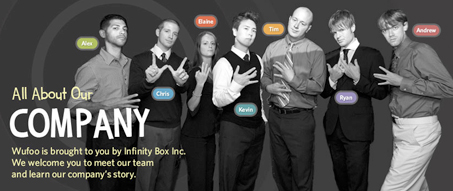
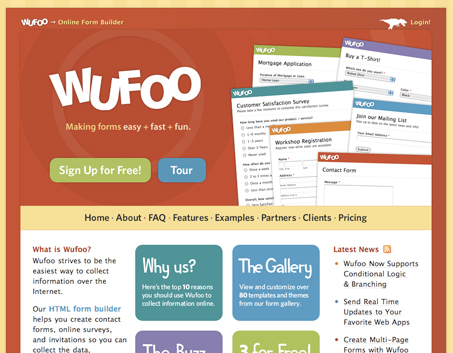
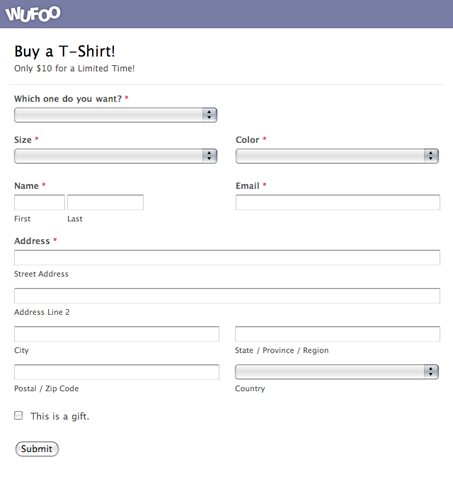




0 Comments